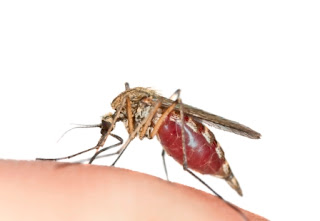Few animals on Earth evoke the antipathy that mosquitoes do. Their
itchy, irritating bites and nearly ubiquitous presence can ruin a
backyard barbecue or a hike in the woods. They have an uncanny ability
to sense our murderous intentions, taking flight and disappearing
milliseconds before a fatal swat. And in our bedrooms, the persistent,
whiny hum of their buzzing wings can wake the soundest of sleepers.
Beyond
the nuisance factor, mosquitoes are carriers, or vectors, for some of
humanity’s most deadly illnesses, and they are public enemy number one
in the fight against global infectious disease. Mosquito-borne diseases
cause millions of deaths worldwide every year with a disproportionate
effect on children and the elderly in developing countries.
There
are more than 3,000 species of mosquitoes, but the members of three bear
primary responsibility for the spread of human diseases. Anopheles
mosquitoes are the only species known to carry malaria. They also
transmit filariasis (also called elephantiasis) and encephalitis. Culex
mosquitoes carry encephalitis, filariasis, and the West Nile virus. And
Aedes mosquitoes, of which the voracious Asian tiger is a member, carry
yellow fever, dengue, and encephalitis.
Mosquitoes use exhaled
carbon dioxide, body odors and temperature, and movement to home in on
their victims. Only female mosquitoes have the mouth parts necessary for
sucking blood. When biting with their proboscis, they stab two tubes
into the skin: one to inject an enzyme that inhibits blood clotting; the
other to suck blood into their bodies. They use the blood not for their
own nourishment but as a source of protein for their eggs. For food,
both males and females eat nectar and other plant sugars.
Mosquitoes
transmit disease in a variety of ways. In the case of malaria,
parasites attach themselves to the gut of a female mosquito and enter a
host as she feeds. In other cases, such as yellow fever and dengue, a
virus enters the mosquito as it feeds on an infected human and is
transmitted via the mosquito’s saliva to a subsequent victim.
The
only silver lining to that cloud of mosquitoes in your garden is that
they are a reliable source of food for thousands of animals, including
birds, bats, dragonflies, and frogs. In addition, humans are actually
not the first choice for most mosquitoes looking for a meal. They
usually prefer horses, cattle, and birds.
All mosquitoes need
water to breed, so eradication and population-control efforts usually
involve removal or treatment of standing water sources. Insecticide
spraying to kill adult mosquitoes is also widespread. However, global
efforts to stop the spread of mosquitoes are having little effect, and
many scientists think global warming will likely increase their number
and range.
Source: National Geographic

No comments:
Post a Comment